Macrophage fumarate hydratase restrains mtRNA-mediated interferon production
- PMID: 36890227
- PMCID: PMC10411300
- DOI: 10.1038/s41586-023-05720-6
Macrophage fumarate hydratase restrains mtRNA-mediated interferon production
Abstract
Metabolic rewiring underlies the effector functions of macrophages1-3, but the mechanisms involved remain incompletely defined. Here, using unbiased metabolomics and stable isotope-assisted tracing, we show that an inflammatory aspartate-argininosuccinate shunt is induced following lipopolysaccharide stimulation. The shunt, supported by increased argininosuccinate synthase (ASS1) expression, also leads to increased cytosolic fumarate levels and fumarate-mediated protein succination. Pharmacological inhibition and genetic ablation of the tricarboxylic acid cycle enzyme fumarate hydratase (FH) further increases intracellular fumarate levels. Mitochondrial respiration is also suppressed and mitochondrial membrane potential increased. RNA sequencing and proteomics analyses demonstrate that there are strong inflammatory effects resulting from FH inhibition. Notably, acute FH inhibition suppresses interleukin-10 expression, which leads to increased tumour necrosis factor secretion, an effect recapitulated by fumarate esters. Moreover, FH inhibition, but not fumarate esters, increases interferon-β production through mechanisms that are driven by mitochondrial RNA (mtRNA) release and activation of the RNA sensors TLR7, RIG-I and MDA5. This effect is recapitulated endogenously when FH is suppressed following prolonged lipopolysaccharide stimulation. Furthermore, cells from patients with systemic lupus erythematosus also exhibit FH suppression, which indicates a potential pathogenic role for this process in human disease. We therefore identify a protective role for FH in maintaining appropriate macrophage cytokine and interferon responses.
© 2023. The Author(s), under exclusive licence to Springer Nature Limited.
Conflict of interest statement
Figures




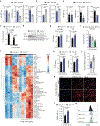
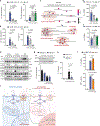


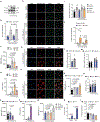


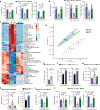
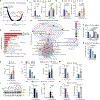

Comment in
-
Mitochondrial fumarate implicated in inflammation.Nat Rev Rheumatol. 2023 May;19(5):257. doi: 10.1038/s41584-023-00963-z. Nat Rev Rheumatol. 2023. PMID: 37024712 No abstract available.
-
Fumarate hydratase: a new checkpoint of metabolic regulation in inflammatory macrophages.Signal Transduct Target Ther. 2023 Sep 4;8(1):332. doi: 10.1038/s41392-023-01594-2. Signal Transduct Target Ther. 2023. PMID: 37666844 Free PMC article. No abstract available.
Similar articles
-
Metabolic remodelling produces fumarate via the aspartate-argininosuccinate shunt in macrophages as an antiviral defence.Nat Microbiol. 2025 May;10(5):1115-1129. doi: 10.1038/s41564-025-01985-x. Epub 2025 Apr 18. Nat Microbiol. 2025. PMID: 40251448 Free PMC article.
-
Prescription of Controlled Substances: Benefits and Risks.2025 Jul 6. In: StatPearls [Internet]. Treasure Island (FL): StatPearls Publishing; 2025 Jan–. 2025 Jul 6. In: StatPearls [Internet]. Treasure Island (FL): StatPearls Publishing; 2025 Jan–. PMID: 30726003 Free Books & Documents.
-
Regulation of airway fumarate by host and pathogen promotes Staphylococcus aureus pneumonia.Nat Commun. 2025 Aug 1;16(1):7050. doi: 10.1038/s41467-025-62453-y. Nat Commun. 2025. PMID: 40745169 Free PMC article.
-
Functional implications of fumarate-induced cysteine succination.Trends Biochem Sci. 2024 Sep;49(9):775-790. doi: 10.1016/j.tibs.2024.05.003. Epub 2024 Jun 13. Trends Biochem Sci. 2024. PMID: 38876954 Review.
-
Citrullinemia Type I.2004 Jul 7 [updated 2022 Aug 18]. In: Adam MP, Feldman J, Mirzaa GM, Pagon RA, Wallace SE, Amemiya A, editors. GeneReviews® [Internet]. Seattle (WA): University of Washington, Seattle; 1993–2025. 2004 Jul 7 [updated 2022 Aug 18]. In: Adam MP, Feldman J, Mirzaa GM, Pagon RA, Wallace SE, Amemiya A, editors. GeneReviews® [Internet]. Seattle (WA): University of Washington, Seattle; 1993–2025. PMID: 20301631 Free Books & Documents. Review.
Cited by
-
Prognostic and immune predictive roles of a novel tricarboxylic acid cycle-based model in hepatocellular carcinoma.Sci Rep. 2024 Jan 28;14(1):2333. doi: 10.1038/s41598-024-52632-0. Sci Rep. 2024. PMID: 38282028 Free PMC article.
-
Metabolic regulation of tumor-associated macrophage heterogeneity: insights into the tumor microenvironment and immunotherapeutic opportunities.Biomark Res. 2024 Jan 7;12(1):1. doi: 10.1186/s40364-023-00549-7. Biomark Res. 2024. PMID: 38185636 Free PMC article. Review.
-
Nonenzymatic lysine D-lactylation induced by glyoxalase II substrate SLG dampens inflammatory immune responses.Cell Res. 2025 Feb;35(2):97-116. doi: 10.1038/s41422-024-01060-w. Epub 2025 Jan 6. Cell Res. 2025. PMID: 39757301 Free PMC article.
-
Metabolic remodelling produces fumarate via the aspartate-argininosuccinate shunt in macrophages as an antiviral defence.Nat Microbiol. 2025 May;10(5):1115-1129. doi: 10.1038/s41564-025-01985-x. Epub 2025 Apr 18. Nat Microbiol. 2025. PMID: 40251448 Free PMC article.
-
Citrulline regulates macrophage metabolism and inflammation to counter aging in mice.Sci Adv. 2025 Mar 7;11(10):eads4957. doi: 10.1126/sciadv.ads4957. Epub 2025 Mar 7. Sci Adv. 2025. PMID: 40053596 Free PMC article.
References
-
- Jha AK et al. Network integration of parallel metabolic and transcriptional data reveals metabolic modules that regulate macrophage polarization. Immunity 42, 419–430 (2015). - PubMed
Publication types
MeSH terms
Substances
Grants and funding
LinkOut - more resources
Full Text Sources
Miscellaneous

